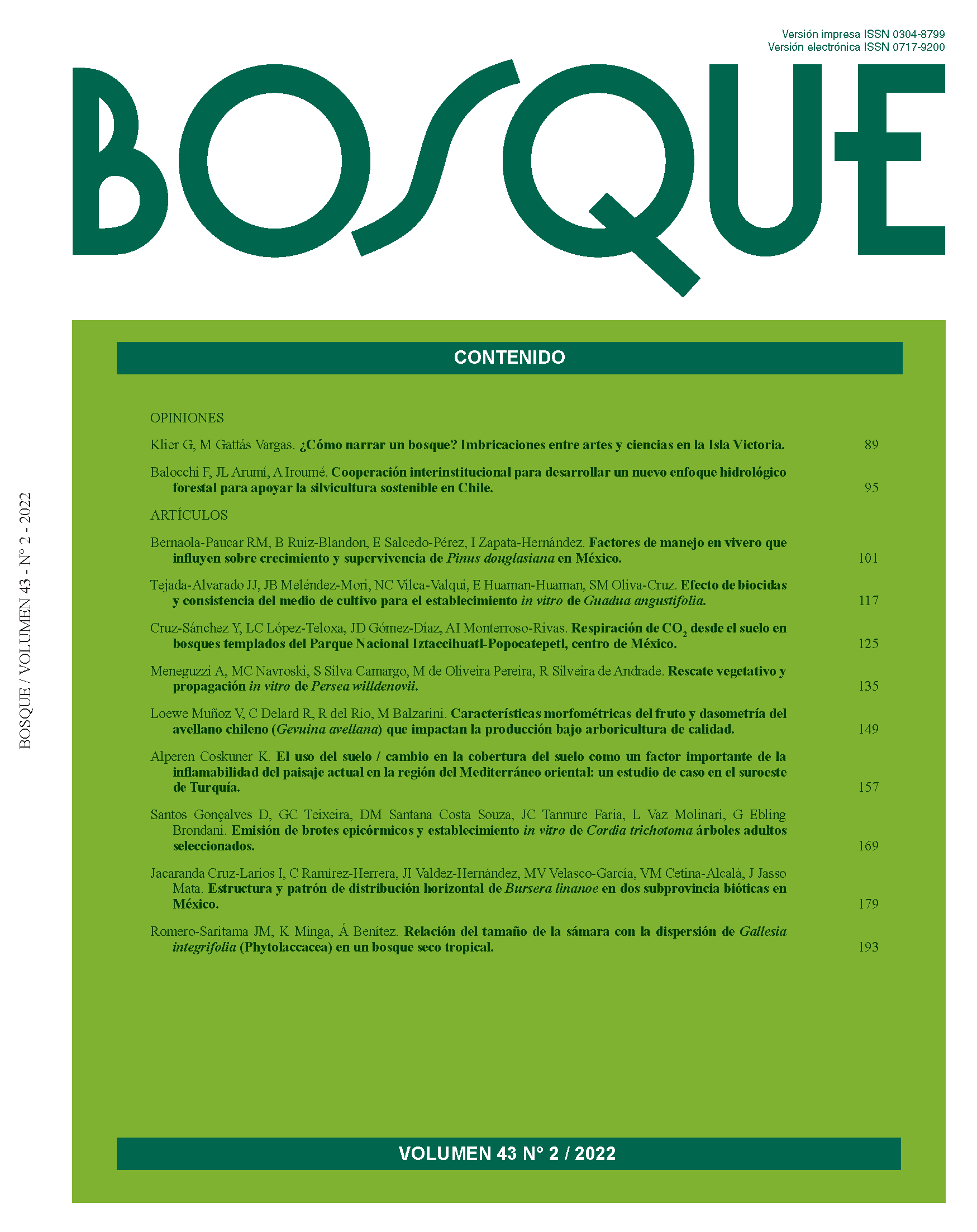El uso del suelo/cambio en la cobertura del suelo como un factor importante de la inflamabilidad del paisaje actual en la región del Mediterráneo oriental: un estudio de caso en el suroeste de Turquía
Contenido principal del artículo
Resumen
El cambio en el uso del suelo/cobertura del suelo (LULC) ha sido uno de los principales impulsores de los cambios en el paisaje en la región mediterránea, donde ha habido un aumento de las tierras forestales. El cambio de LULC en la región no solo ha cambiado la estructura y composición de los rodales forestales, sino que también ha resultado en un aumento de los combustibles disponibles. Ha habido pocos estudios sobre la acumulación de combustible en relación con LULC, sin embargo, ningún estudio explica cuantitativamente la relación entre el cambio de LULC y la carga de combustible del dosel en la región mediterránea. El objetivo de este estudio es evaluar los efectos de los cambios de LULC en el riesgo general de incendios de copas mediante el examen de la estructura, la composición y las cargas de combustible del dosel de los rodales en los bosques del Mediterráneo oriental durante 35 años. Para los análisis se utilizaron mapas de tipos de masas forestales generados a partir de la interpretación estereoscópica de fotografías aéreas y datos de estudios de campo. Los resultados del estudio mostraron cambios significativos en LULC durante el período 1977- 2012. Hubo una disminución del 16,6 % en las áreas agrícolas, un aumento del 144,5 % en las áreas de asentamiento y un aumento del 6,8 % en los bosques de pino. En cuanto a los cambios estructurales y composicionales de los terrenos forestales, disminuyeron los rodales abiertos de pino que incluían comunidades de matorral mediterráneo (77,2 %), pero aumentaron los rodales cerrados de pino puro (49,9 %), lo que se tradujo en un aumento de la carga total de combustible del dosel en los rodales de pino (86,4 %). Los resultados indicaron que los paisajes tendían a volverse más homogéneos, pinares completamente cerrados, lo que resultó en un aumento en la continuidad y la acumulación de combustibles disponibles para la combustión.

